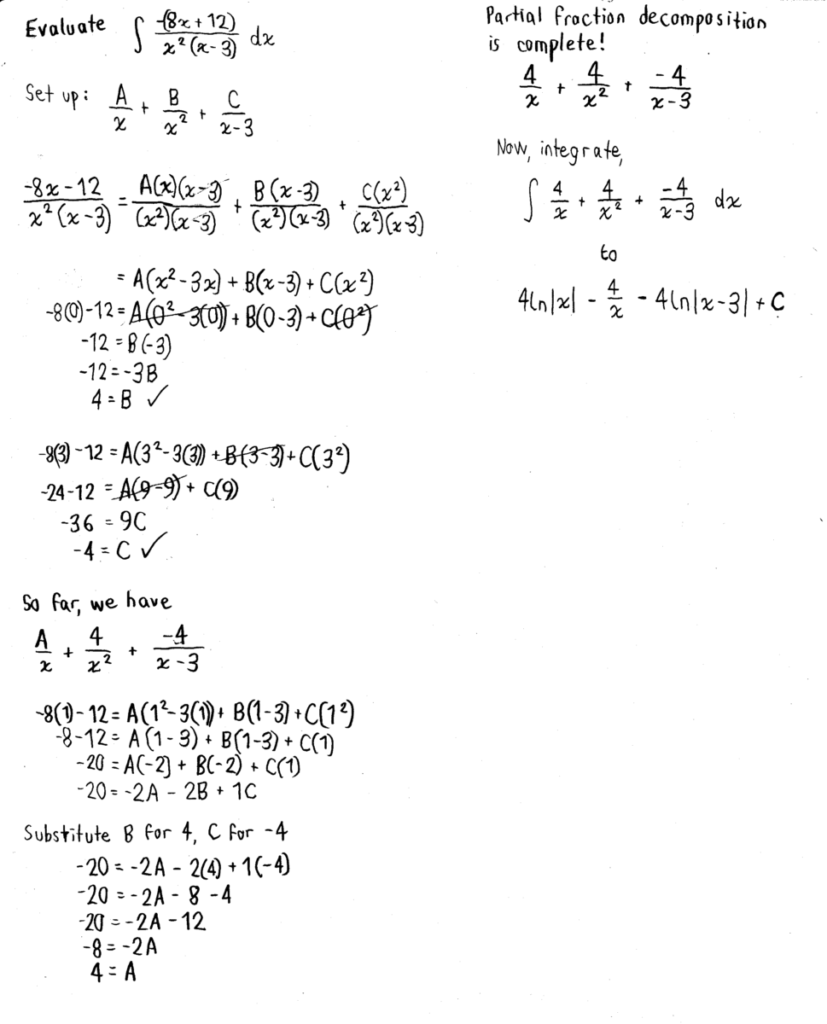Calculus 2 (MAT1575) has been a wild journey for me, especially with having an partially asynchronous format. This semester, we have been learning most of the material on our own, while taking an advantage to explore many different options. At first, I had an very hard start as I am disorientated with the new structure, but I was able to finish this class with a blast. The last thing I am going to do before I leave this class is to answer my own prompt from Week 16.
Prompt #1
Integration – I only count integration techniques on this list.
- Easiest (1/10) – Improper Integrals – I know that improper integrals can be hard for some students due to limits. However, I had a blast doing this topic, because it is a fun exploration when integrals go towards infinity or through asymptotes. While evaluating improper integrals, I like to imagine that infinity would actually be a number. In these WeBWorK sets, each problem took me less than one minute to do them (if they were divergent)
- (2.5/10) – U-substitution – Objectively, u-substitution is the easiest integration technique to apply. However, I had a hard time applying this particular technique, because I didn’t knew what to do if the u and du didn’t perfectly fit the forms. After Week 5, I was able to apply this technique almost seamlessly. To ensure my understanding of u-substitution, I tried a problem with u-substitution and posted the step-by-step solution on Week 6.
- (4/10) – Integration by Parts – I was able to partially understand this concept from the start. However, I made a conceptual error in Test #1, in which I mixed up my u and dv, resulting in far more complicated answers. After I realized my mistakes, I have used the mnemonic (LIATE) to help remember the order in which I used my u and dv.
- (5/10) – Partial Fraction Decomposition – I didn’t know how to do partial fraction decomposition, the easy way… until Week 15! Sure, I have used the methods from Mathispower4u to solve these problems, but it is not exactly the easiest way. With his way, I can only do these problems involving A and B, but not more than that. However, with the easy way (substituting values), I am able to do more complicated problems, and maybe the ones using long division.
- Hardest (8.5/10) – Trigonometric Substitution – What I can say about trigonometric substitution?! This is one of the hardest integration techniques to apply. I mean, we have a rational function, but it is replaced with sin(), cos(), tan(), and my head keeps on spinning! And, I have to know all these trigonometric integrals and identities in order to do these seamlessly! Without any knowledge of trigonometric integrals and identities, you will definitely get stuck! However, I’m so genuinely blessed that I able to follow specific examples used on class (since their randomization is so limited) to obtain the procedure. Otherwise, I will get stumped.
Series– I don’t count sequences and infinite series on this list.
- Easiest (1/10) – Divergence Test – One of the easiest tests to apply. It involves p-values, and that’s it… It’s simple as that.
- (1.5/10) – Comparison Test – It is also easy to apply the Comparison Test. When I use this test, I remove other non-involved terms, and keep the ones with the highest degree (or growth) in the numerator and denominator. Note this test works best when it only involves powers.
- (3/10) – Taylor/Maclaurin Polynomials – The topic is quite the breeze, because I just need to repeatedly take derivatives to certain degrees. The easiest I know is taking the x degree of Maclaurin polynomial of ex. Yes, there are hard problems, but in this class, it is focused on the easy ones.
- (3.5/10) – Integral Test – This test is quite intuitive to apply. Since I like to integrate, I like to use this test most of the time to determine convergence. Yes, I know that the integral test may cause problems at times, but I know when to use integral test or not.
- (4.5/10) – Ratio/Root Test – This test is considered “not bad”. It involves multiplying, dividing, and the cancellation of terms. I know that I am not able to cancel out all of the terms like (n+1)2, and there are several problems where I get stumped using the Ratio/Root Test, but I do understand the overall concept.
- (5.5/10) – Alternating Series Test – This test gives us clear conditions to whether it converges. It may quite be easy to tell by just testing these conditions, but I would likely have to use another test to prove absolute convergence, conditional convergence, or divergence. Applying this test by itself isn’t bad at all, but when I have to apply another test, it bumps up the difficulty slightly.
- Hardest (9/10) – Power Series – Not only I have to apply different tests, but also I have to find the radius of convergence!!! This has to be one of the most complicated series topics we have learned. Enough said!
Applications of Integration – I don’t count Riemann sums here.
- Easiest (2.5/10) – Areas between Curves – With the exception of having to set up integrals and having the correct bounds, it is just solving a definite integral and using the systems of equations. To make this topic easier, I used my handy-dandy tool, the TI-84.
- Hardest (6/10) – Volumes – While it may be the hardest topic for many students, I find this topic not-so-difficult. Yes, I get that there is considerably more workload than Areas between Curves, it is still just definite integrals… no problems! However, the thing is that I may be stumped with some problems, but understood the general procedure for finding the volume.
Prof. Poirier, if you are reading this, again, it has been a pleasure having you as my Calc 2 professor. I will definitely miss you… so much
(And I may update this blog post as necessary)






Recent Comments